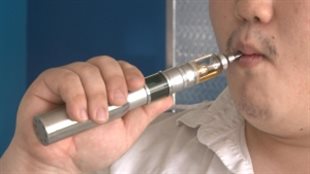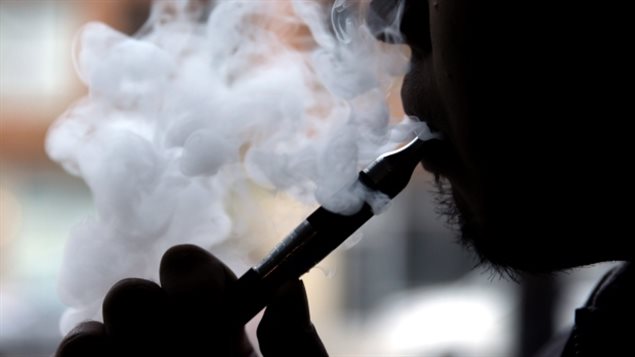Sales of electronic cigarettes, or E-cigarettes, has been growing by leaps and bounds in the last couple of years, with sales in the billions of dollars.
However, even as their popularity grows, so too do the questions surrounding their safety and other claims made by manufacturers
Now, the World Health Agency has issues a report calling for a ban on e-cigarette use in public indoor spaces over concerns of second-hand “vapour”.
It says the ban should remain in effect until it can be clearly proven that exhaled vapour is not harmful to bystanders.
Catchy names, fruity flavours designed to attract children
There is also concern that the names and flavours used in the e-cigarette liquid (known as “e-juice”) is designed to appeal to children to get them into the “vaping” /smoking habit.

The WHO report says these fruity, sweet-like and alcohol-based flavours should be taken off the shelves and vending machines should be removed in almost all locations while calling for tougher regulation and measures, including a ban on the sale of the electrical devices to minors – warning that they pose a “serious threat” to foetuses and youths.
The e-cigarettes contain a small rechargeable battery, a heating coil, and a cartridge with flavoured or scented liquid which in some cases contains nicotine. The battery heats the coil which vapourizes the liquid which the person then inhales through the e-cigarette.
Because the process produces a vapour, it’s called “vaping” as opposed to smoking.
E-cigarettes are often billed as a “safe” alternative to tobacco, and as a way to wean smokers away from tobacco.
The WHO and many other health organizations are saying such claims often made by e-cigarette makers and marketers, should be prevented from making such claims until the companies can provide “convincing supporting scientific evidence and obtain regulatory approval”.
Big tobacco companies are major investors in e-cigarettes
The government agency Health Canada “To date there is not sufficient evidence that the potential benefits of e-cigarettes in helping Canadians quit smoking outweigh the potential risks.
Many health agencies have expressed concerns that “vaping” could be a gateway to actual smoking.
Indeed, big tobacco companies are major investors in e-cigarettes.
In Canada, selling e-cigarettes with nicotine or those with a health claim is not authorized, though selling e-cigarettes or e-juice without nicotine is legal. E-juice containing various levels of nicotine can be purchased in Canada. In spite of Health Canada regulations, one Winnipeg-based company Theravape Inc. says, “it’s not authorized for sale, but it’s not prohibitied. It’s a grey market area”
Several cities and institutions have banned or restricted e-cigarette use
This week, Canada’s largest city, Toronto, voted to ban e-cigarette use in city workplaces, the city of Red Deer, Alberta banned e-cigarettes in public venues starting last month, and the province of Quebec is currently considering placing e-cigarettes under the same restrictions on sales and use as regular tobacco products.
Other bans or restrictions have been instituted in New York, Los Angeles, Boston, and Chicago







For reasons beyond our control, and for an undetermined period of time, our comment section is now closed. However, our social networks remain open to your contributions.